Open Letter to President Biden From a Dispirited Black Voter
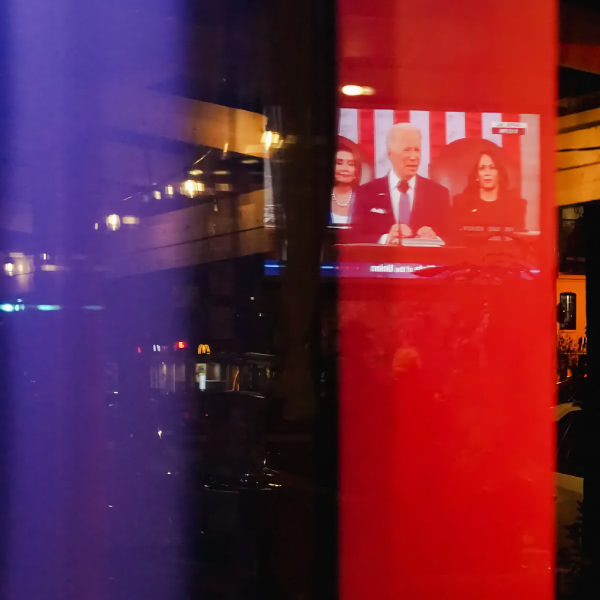
“What a difference 300 days makes.”
That’s how Charles Blow begins his letter to President Biden. On April 28, 2021, in a speech to a joint session of Congress, Biden voiced his full support for police reform:
“My fellow Americans, we have to come together to rebuild trust between law enforcement and the people they serve, to root out systemic racism in our criminal justice system and enact police reform in George Floyd’s name that passed the House already.”
President Biden during his State of the Union address on Tuesday sounds like a different man. He’s turned his back on reform and thrown his arms around police:
“We should all agree: The answer is not to defund the police. It’s to fund the police. Fund them. Fund them. Fund them with resources and training. Resources and training they need to protect their communities. I ask Democrats and Republicans alike to pass my budget and keep our neighborhoods safe.”
Blow, writing for The New York Times:
This feels like a callous attempt to appease the law-and-order crowd. Policing has not fundamentally changed over the past year. According to The Washington Post, there were a record number of fatal police shootings in 2021. Flooding a police system in desperate need of reform with more cash, before demanding those reforms, would only serve to buttress the brokenness. Maybe policing shouldn’t be starved, but it definitely shouldn’t be fattened.
Blow also reminds the President that after progress stalled on the George Floyd Justice in Policing Act in September, he said he would draft an executive order that would include many of the reforms it proposed. Now, nearly six months later, that order has yet to be issued.
The media’s coverage of Ukrainian vs. non-European refugees
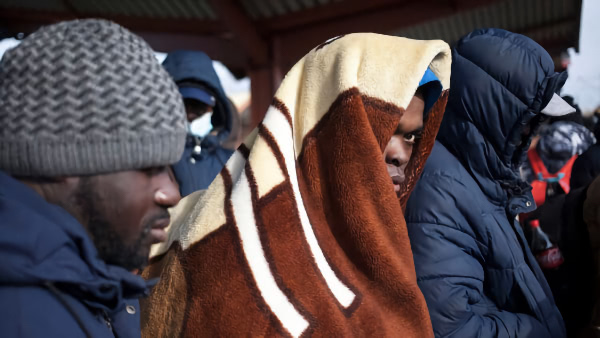
David A. Love, writing for theGrio:
White reporters are really in their feelings over the sight of white refugees.
Some of the news media have done an atrocious job of covering the unfolding refugee crisis in Ukraine, as thousands of people flee the Russian invasion of the country. Openly displaying their racial bias, reporters said the silent part out loud as they regard white Ukrainian refugees as “civilized” and dismissed non-European refugees as poor, dirty savages. […]
“This isn’t Iraq or Afghanistan…This is a relatively civilized, relatively European city,” CBS foreign correspondent Charlie D’Agata said of Kyiv. While D’Agata apologized for his comments, the damage was done and we got the message. […]
Meanwhile, the media ignored the plight of tens of thousands of students from Africa, Asia and the Arab world who live in Ukraine and are desperate to leave. At least two students from Algeria and India were killed, amid reports of poor treatment of African students and migrants fleeing Ukraine, including Ukrainian border guards beating Africans and blocking them from boarding buses and leaving the country. Around 20 percent of foreign students in Ukraine are from Africa, including 4,000 from Nigeria. Members of the U.N. Security Council from Gabon, Ghana and Kenya condemned the racial abuse these African refugees have faced.
Hollywood’s Fraught History with Black Audiences
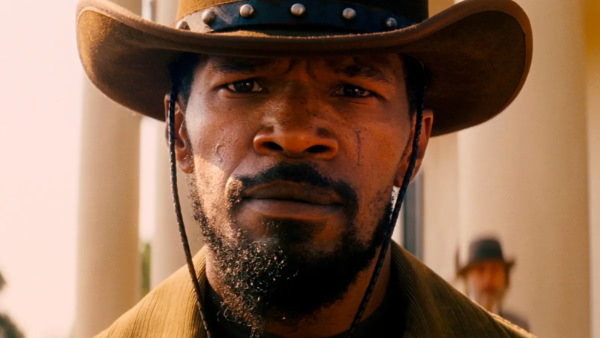
The New Yorker Radio Hour hosts David Remnick and Ngofeen Mputubwele speak with film scholar Aymar Jean Christian about how the recent wave of Black films and television shows follows an established pattern in Hollywood.
Jean Christian:
They always use the Black audience to draw people back into theatres when they’ve lost the audience in some other way. And that is what’s happening again now.
Previous attempts to get people going to the movies again led to the Blaxploitation films of the 70s (e.g., Shaft) and the “ghetto pictures” of the 90s (e.g., Boyz n the Hood).
The current wave of genre films was kick-started by Quentin Tarantino’s Django Unchained.
In the 2010s, I think Django Unchained was a huge hit and that reminded Hollywood that Black people like movies, and that we deserve movies. And I think with that and 12 Years a Slave, which also did really well, paved the way for films like Get Out to get financed — which would have never been financed before.
‘A Madea Homecoming’ isn’t complicated, but our feelings about Tyler Perry are
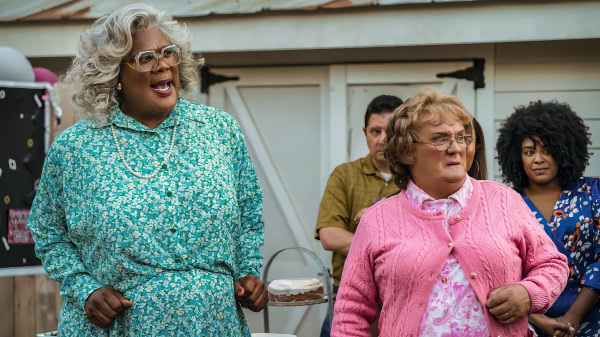
After her brief retirement, Tyler Perry brought back the Madea character for her 12th film, Netflix’s A Madea Homecoming.
NPR’s Aisha Harris speaks with guests about the film. It would be too easy to spend half an hour taking shots at a Madea movie, but everyone shares fair and insightful critiques.
Guest J.C. Howard on how Madea movies are still written and performed as though they are plays:
Back in the kind of late ’90s, early 2000s, Tyler Perry was writing and acting as Madea in stage plays, and these were filmed and released on VHS and DVD. And back in those days, I was all about it - like, truly. […]
And the plays always had these, like, electric moments and asides of what felt like improvised lines or conversational monologues, and all of that was underscored by a crowd that was engaged.
They were groaning and gasping and laughing uproariously. And I think that the absence of that, the absence of the audience, is what robs a lot of Tyler Perry’s work of its relevance. Like, the timing of all the jokes in the movie, the repetition, all of it, I feel like it just needs a live audience. And for me, a lot of it just falls flat while I’m sitting alone watching at home on Netflix.
Harris and guests also discuss the movie’s moderate stance on police funding, how it handles its first openly gay character, and more.
NFL Legend Deion Sanders on HBCUs and Raising the Next Generation of Black Athletes
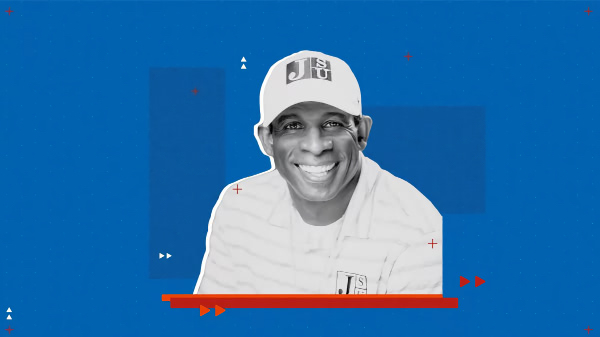
NPR’s The Limits:
It’s Prime Time on The Limits. NFL legend Deion “Coach Prime” Sanders sits down with [host Jay Williams] to talk about his latest chapter coaching college football. The two-time Superbowl champion decided to bet on HBCUs as the future of the NFL, successfully making what Sports Illustrated has dubbed one of the most shocking recruits in college football history.
After leading Jackson State to an 11-1 record and winning the FCS Championship, their first since 2007, Sanders said, “This is not a moment but a movement.”
Sanders:
Don’t get caught up in the moment in ahh, we won. We won. No, no, no, no, no. Baby, put a seatbelt on ’cause we’re going to be here for a minute. This is a movement. Baby, we moving. That’s why you got to have a seatbelt on because this ride is going to get a little rough, and we’re going to go higher and higher and higher. And you got to buckle up. This is what I see. Every HBCU around the country, man - they’re loading up. The kids now are saying, you know what? You’re an option when once upon a time, you were not an option. We’re loading up athletically.
I don’t follow sports, but after listening to this Deion’s got me hyped about JSU football.
Rashaad Newsome Pulls Out All the Stops
Martha Schwendener reporting for the Times:
His protean “Assembly,” at the Park Avenue Armory, bridges art, technology, performance, workshops — and offers an A.I. Being who will teach you how to vogue.
One of Rashaad Newsome’s greatest contributions to contemporary art has been to highlight and champion vogueing — a stylized form of dance invented by pioneers of Black and trans culture whose ideas have gone mainstream in America.
Vogueing runs like a thread throughout “Assembly,” Newsome’s grand, opulent and smart exhibition at the Park Avenue Armory. The project goes light years beyond his formal forays into vogue, weaving together a video installation, collages, sculptures, an hourlong performance with dance and singers; and a workshop conducted by Being, a cloud-based artificial intelligence that Newsome designed. “Assembly” is a rich sensory experience, as well as a springboard for rethinking the roots of American culture.
I’m sure this sounds just as amazing as it looks — I mean, there’s a choir and everything. Sadly, the Times’ videos don’t include audio.
Rashaad Newsome: Assembly runs through March 6 at the Park Avenue Armory in Manhattan.
Thanks for reading. See you next week.
